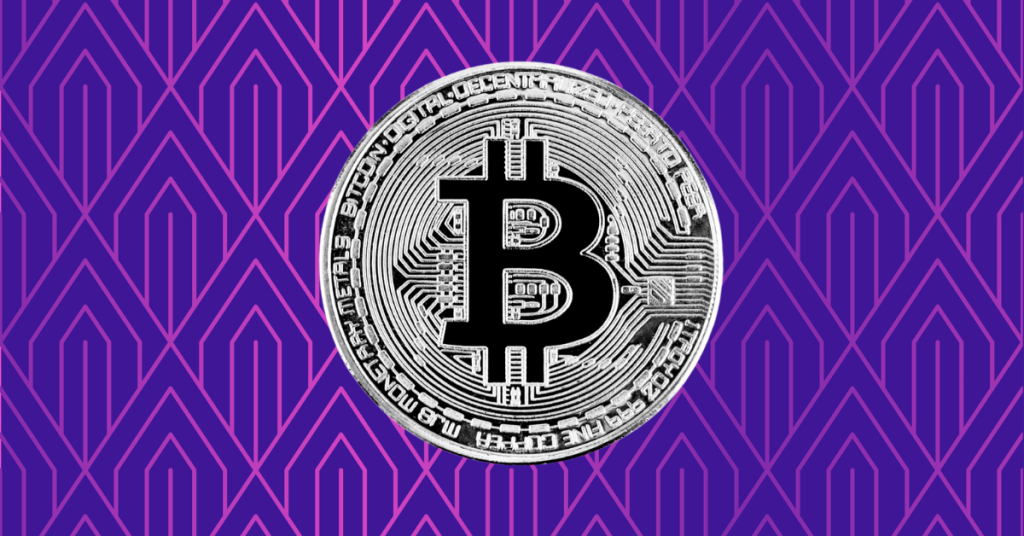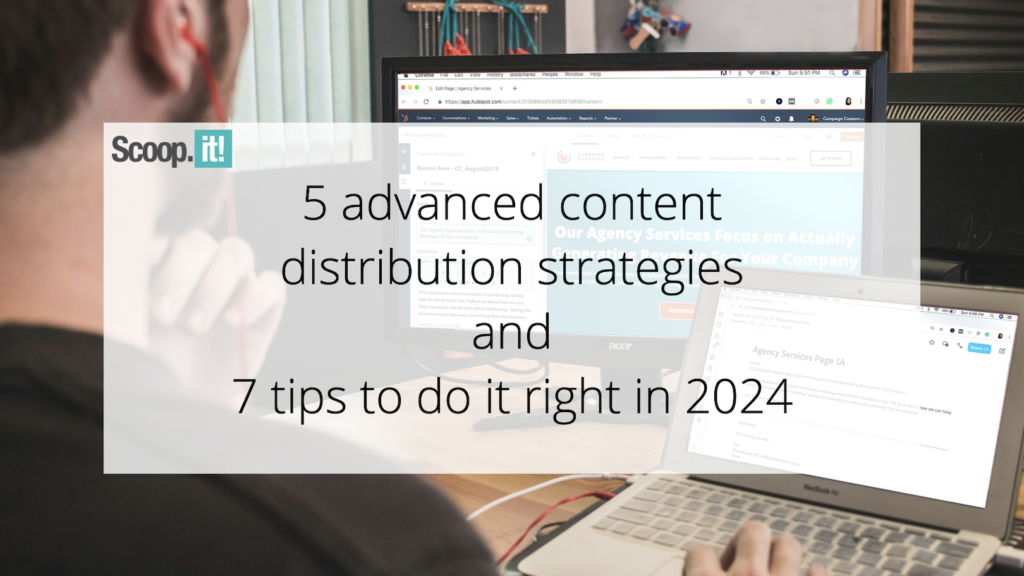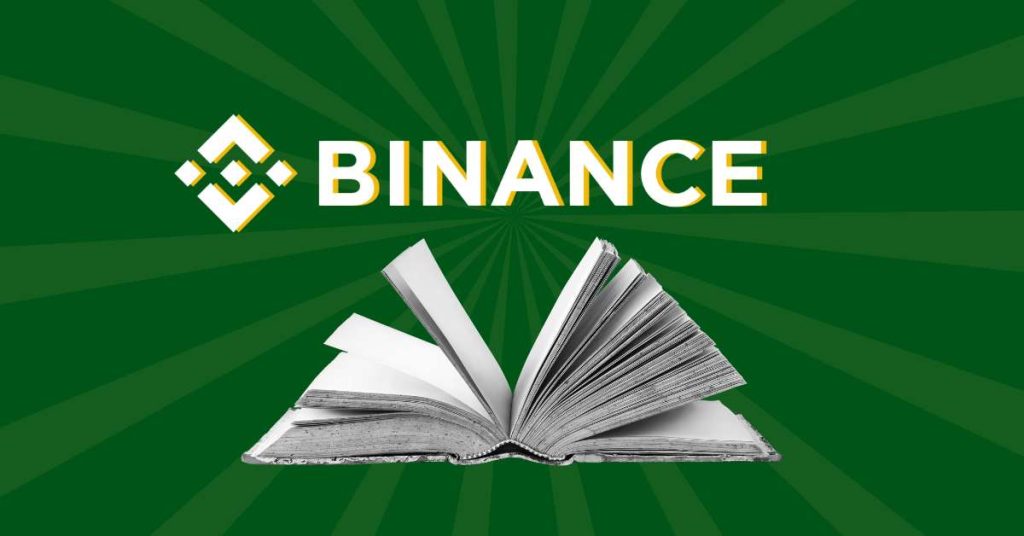Crypto conglomerate Digital Currency Group (DCG) saw its consolidated revenue grow amid a recent run-up in cryptocurrency prices.
Published in B&T Latest News 9 May, 2024 by The bizandtech.net Newswire Staff
DCG reports revenue growth amid crypto market bounceback
Published in B&T Latest News 9 May, 2024 by The bizandtech.net Newswire Staff
Analyst Identifies Two Scenarios for Bitcoin: $75K or $47K

The post Analyst Identifies Two Scenarios for Bitcoin: $75K or $47K appeared first on Coinpedia Fintech News
Crypto analyst Crypto Jebb has identified a significant chart pattern on Bitcoin that could potentially propel its price to $75,000. In a recent video, Jebb discusses the emergence of an inverse Head and Shoulders pattern, signalling a possible rally for the leading cryptocurrency.
The inverse Head and Shoulders pattern, according to Jebb, presents a bullish outlook for Bitcoin’s price. Drawing from the head of the pattern to the shoulder line, Jebb extrapolates a price target of $75,000. He explains that if Bitcoin were to drop back down to $60,000, forming the right shoulder of the pattern, a subsequent bounce could initiate a major uptrend.
He mentioned that in the scenario where Bitcoin fails to undergo the anticipated rally and instead drops to price levels as low as $47,000, it would afford investors additional time to allocate funds into assets poised for long-term appreciation. Using Bitcoin as an example, he expressed confidence that it will likely be worth considerably more in the future, irrespective of short-term price fluctuations.
“I think that Bitcoin will need a major corrective movement and I think $47,000 is very, very, very much in the cards for reasons that we’ve discussed in other videos. But the fact of the matter remains that whether the market goes up or whether the market goes down, we are able to be prepared,” he said.
While acknowledging the recent corrective movement in Bitcoin’s price, Jebb remains optimistic about its long-term prospects. He explained the importance of strategic investing and maintaining confidence in assets with strong growth potential over time.
Jebb also highlights the broader implications of Bitcoin’s potential rally, noting its potential to positively impact the entire cryptocurrency market. However, Jebb remains cautious, acknowledging the possibility of further corrections in Bitcoin’s price.
Published in B&T Latest News 9 May, 2024 by The bizandtech.net Newswire Staff
Shiba Inu’s Burn Rate Crosses 200%, New Developments Coming In

The post Shiba Inu’s Burn Rate Crosses 200%, New Developments Coming In appeared first on Coinpedia Fintech News
Shiba Inu, a prominent memecoin that keeps challenging Dogecoin, is once again in the news as the burn rate soars 200%, which has rendered its price highly volatile in the past 24 hrs.
Shibburn’s insights revealed the burn rate surged 210.27% in the last 24 hrs burning 24.63 million tokens from the supply.
Coinglass data showed a slight 0.28% decrease in the token’s open interest, reaching $57.84 million, whereas its volume increased by 2.31% to $113.34 million. The derivatives market witnessed increased trading activity, while a drop in its open interest depicted a bearish sentiment. Shiba Inu has recently seen making headlines with the latest developments discussed below.
Shiba Inu in Memecoin Index
Shiba Inu was also acknowledged in the newly launched VanEck subsidiary’s meme-coin index, MarketVector, which tracks the 6 largest memecoin performances. It underscored Shiba Inu’s significant impact, stability, and influence in the crypto market. As MarketVector capped the weightings of the assets in the index at 30%, Shiba Inu was given the weight of 28.01%.
Shiba Inu’s 2050 Projections!
Interestingly, In another report, the AI giants project Shiba Inu to reach $.0194, with the current market sentiments being 86% bullish. Investors are very much confident in its recovery stage. The Shiba Inu at the end of May is projected to be at $0.00008503, which is a little below its ATH price. The figure also marks a 247% increase from its current price which is huge, reflecting the positive dominance around the dog-themed crypto. While Changelly analysts project Shiba Inu to reach $0.0194 in July 2050, while the AI Chatbot Google Bard predicts for it to reach the level in 2040, presenting two different scenarios.
K9 Finance Major Updates
The latest update from K9 finance includes a detailed tutorial video that showcases forthcoming features in the Bone Crusher platform. It also demonstrates the new wallet connectivity features that allow users to link their digital wallets securely with the platform. This will also simplify transactions and improve user experience. The update will also introduce staking functionality. An advanced token-swapping feature is also set to be introduced. Users will be able to claim their rewards in KNINE, BONE and other tokens.
Published in B&T Latest News 9 May, 2024 by The bizandtech.net Newswire Staff
Here’s Why Bitcoin Is Poised to Hit the $265,000

The post Here’s Why Bitcoin Is Poised to Hit the $265,000 appeared first on Coinpedia Fintech News
In a recent discussion, analyst Larry Jones delved into the current state of the cryptocurrency market, focusing particularly on Bitcoin’s trajectory and long-term investment strategies. Jones opened up about several key indicators and his approach to navigating the market’s fluctuations.
Jones began by pointing out a crucial Bitcoin indicator suggesting a period of relative stability in the crypto space. He brought to notice the collapse of Bitcoin’s volatility risk premium (BRP), indicating a trend towards market calmness. This observation aligns with Jones’ earlier prediction of Bitcoin trading sideways for a while, which has largely materialized.
Moreover, Jones shared insights into Bitcoin’s potential price sustainability, referencing a target of $265,000. He cited Young Ju, founder and CEO of on-chain and market analyst firm Crypto Quant, who suggested that Bitcoin’s network fundamentals could support a market cap three times its current size compared to the previous cycle’s peak. This projection is based on a comparison of Bitcoin’s price to its associated hash rate, indicating increased market activity and investor interest.
The hash rate to market cap ratio, according to Jones, assesses the growth of mining activity relative to market capitalization. He explained that if this ratio continues to grow, it could potentially sustain Bitcoin’s price at $265,000. Jones backed his analysis with a chart illustrating the correlation between Bitcoin’s price, hash rate, and the ratio over time.
While discussing his personal investment strategy, Jones revealed his ongoing dollar-cost averaging (DCA) approach, particularly in altcoins and meme coins. He explained the importance of accumulating Bitcoin for the long term, considering its historical market cycles. Jones acknowledged the challenge of timing market phases but stressed the significance of accumulating during the mark-up phase, even if it requires patience and conviction.
Published in B&T Latest News 9 May, 2024 by The bizandtech.net Newswire Staff
Bitcoin-native application platform Arch raises $7 million led by Multicoin Capital
Bitcoin-native application platform developer Arch Labs has raised $7 million in a seed round led by Multicoin Capital.
Published in B&T Latest News 9 May, 2024 by The bizandtech.net Newswire Staff
5 Advanced Content Distribution Strategies and 7 Tips to Do It Right in 2024

“Content distribution” is a phrase that may seem mystifying to you. However, when it’s working well, it simplifies your content creation efforts.
One piece of high-quality content can work for you repeatedly by simply breaking it into 5–7 pieces and distributing it across several different marketing channels.
Here we’ll de-mystify content distribution, define what it is, best practices, and how to use some advanced content distribution strategies to get the most out of your marketing assets.
What Is Content Distribution?
Content distribution is the strategic process of sharing content across a variety of channels to reach a target audience.
At their best, content distribution strategies maximize the visibility and impact of your content.
Common types of content that can be distributed include:
- Email newsletters
- White papers
- Case studies
- Infographics
- Blog posts
- Podcasts
- Videos
It’s important to promote content across different channels and media formats to maximize reach and engagement.
For instance, the demographic that listens to podcasts may not be the same demographic that reads white papers. But both groups are nevertheless in the target audience you are trying to reach.
By creating one piece of content and distributing it through several different marketing channels, you are maximizing your reach while keeping the output of your resources nearly the same.
In fact, promoting content is your best friend when it comes to increasing the return on investment (ROI) of your marketing efforts.
Video clips from a larger webinar, including AI-generated videos, can be included in newsletters to your email list. Newsletters can be re-formatted as blog posts. Blog posts can be broken down into 5–7 social media posts, all of which, in turn, create an inbound marketing trail.
The key is to be strategic, have a plan, and follow the plan consistently.
Importance of Effective Content Distribution
Consistently creating high-quality content is a challenge on its own, but it’s only half the battle. After all, the most impressive content in the world won’t do your marketing goals any good if no one ever sees it.
This is why effective content distribution is so important. When done well, it increases brand awareness, solidifies brand authority, and boosts audience engagement.
Let’s take a closer look at how effective content distribution contributes to overall marketing ROI.
Brand Awareness: Collaborating with influencers or thought leaders and getting featured in their content, which is then shared on their platforms, can generate backlinks to your website, enhancing online visibility and brand awareness. Create a partnership proposal to get started on your first collaboration.
Brand Authority: Contributing expert opinions or insights to industry publications positions your brand as an authority in the field, resulting in media mentions that enhance credibility and expertise.
Audience Engagement: Launch user-generated content campaigns where your audience contributes content related to your brand, encourages social media shares, builds a community around your brand, and enhances engagement.
Types of Distribution Channels
There are three distinct categories of distribution channels — owned channels, earned or shared channels, and paid channels.
It’s important to understand the distinctions between each so you can build your content distribution strategy accordingly.
Owned Channels
These are platforms that your brand has control over, such as your official website, blog, and social media profiles. You have full ownership over your owned channels and your content, branding, and connection to your audience.
However, building and maintaining traffic and consistently having to produce high-quality content to keep them engaged is a challenge.
Earned/Shared Channels
Earned or shared channels involve leveraging third-party platforms or audiences to distribute content. This includes things like media coverage, influencer collaborations, and user-generated content.
The benefit is the potential for extended reach through established audiences you normally wouldn’t have access to. Challenges may arise over having less control.
For instance, becoming dependent on external factors you have no influence over and having to adhere to the values and requirements of third-party platforms.
Paid Channels
Paid channels involve investing in advertising to promote content. This includes social media ads, search engine marketing, and sponsored content. The advantages are immediate visibility and targeted reach.
Challenges include the expense, the need to optimize ad performance, monitor AdWords competitors, and ensure the content aligns seamlessly with platform and audience expectations.
It takes time to get dialed in, and paid channel distribution can get costly quickly as you experiment with what works.
Best Practices for Content Distribution Strategies
Your content distribution should be done strategically. Gone are the days when content distribution meant simply publishing a blog post and pasting its URL to your social media profiles.
If that’s still where you are in your content distribution strategy, that’s okay. It’s good that you’ve started somewhere.
But now is the time to start thinking strategically so you can start seeing some serious ROI for your efforts.
Here are seven best practices for building content distribution strategies.
Know Your Audience
Being too general is a death knell for a lot of content marketers. You have a general idea of your target audience and create content around what you think they’ll be interested in.
You may get lucky and strike gold with this approach. But it’s far more likely low traffic, low engagement, and few conversions will frustrate your attempts.
That’s why the first thing you need to do is create an audience persona.
An audience persona (also called a “buyer persona” or “customer profile”) maps out your ideal customer.
It usually includes things like:
- Motivations
- Occupation
- Pain points
- Location
- Hobbies
- Gender
- Salary
- Age
Let’s take an example of creating personas for gamers.
Imagine ’Alex,’ someone who loves action-adventure games on PC. Alex is particularly captivated by unique game items, like Catwoman’s grappling claw pickaxe, which symbolizes agility and stealth in gameplay.
To map Alex’s customer journey, consider how she discovers new games, perhaps through Twitch streams or gaming forums, and her purchasing habits, like opting for complete game editions.
Understanding these details helps create targeted content, such as in-depth reviews of anticipated action-adventure games or features on legendary in-game items.
This approach ensures your content resonates with specific segments like Alex and her fellow gamers.
Next, dive into the pain points of your customers. What problems do they care the most about solving?
Use tools like:
Google Analytics – gives you insight into user behavior and who is viewing your content.
Glassbox – creates heatmaps and session replays around your website so you can see in real time what content your audience engages with.
Hubspot Analytics – gives you detailed reports across marketing channels by analyzing lead generation, customer interactions, and behaviors.
Once you’ve gathered this data about your audience’s demographics, interests, and behaviors, you can tailor your content to their needs.
Just as importantly, you’ll be able to make data-driven decisions about the best content distribution channels to focus on based on your persona research.
Understand the Content You Should Distribute First
To understand the content you should distribute, first, make a list of the types of content assets you already have. For example, take inventory of your blog posts, white papers, case studies, infographics, videos, and similar content.
Analyze the historical performance of each content type on the different channels they’re published on. Which has been the most effective?
Use this information to map out which content to distribute first.
For instance, if your short-form videos are performing the best, concentrate on distributing them to your email subscribers and as social media posts.
Choose the Right Channels for Maximum Reach and Visibility
Now that your historical content is working for you, you can turn your attention to choosing the best channels to maximize your visibility moving forward.
You’ll take the same approach with this as you did with your historical content.
Compile the data you’ve gathered from your audience behavior tools. See what your target audience is engaging with. Take note of the demographic they’re in.
If your audience is primarily 20–30 years old, using mobile devices, and engaging with your videos, you’ll want to choose to invest in short-form video content.
If your audience is middle-aged professionals who like your case studies, work on creating bite-sized statistics and analytics to share on LinkedIn and your email list.
Lastly, compare the benefits and drawbacks of paid and organic channels. You want to strike a healthy balance between the two for sustainable growth.
Putting all your eggs in one bucket is never the wisest course of action. However, you must keep your budget and business goals in mind when determining how much to invest in paid and organic channels.
Identify and Set Your Content Distribution KPIs and Goals
Speaking of business goals, you’ll want to map out the key steps for identifying and setting up your content distribution KPIs.
To work towards clear goals, determine relevant metrics and align them with your broader content marketing strategy.
Your goals and metrics should work together.
For instance, if your goal is greater brand awareness, set a metric that monitors brand mentions across media.
If your goal is greater email engagement, set a metric of higher open rates.
Create Engaging Content That Resonates With Your Audience
“Engaging content” doesn’t just mean writing with personality (though that does help).
In the context of marketing, “engaging content” means describing your buyer persona’s pain points, information preferences, and motivations. Then, positioning your product as the best solution.
To do this, it all goes back to the data.
With good data, you can create a good buyer persona. Your customer profile then serves as a guide to create content that’ll prompt your target audience to share, engage, and ultimately convert.
Create a Content Calendar
There are many ways to build a content calendar. To be the most effective, your content calendar should include:
- Who is responsible
- Marketing channel
- Distribution plan
- Due dates
- Format
Color coding is a wonderful way to help keep content calendars organized. There are many tools available to streamline building a content pipeline. Some of the best are Asana, Trello, Notion, and AirTable.
In addition to an overall content calendar, you’ll need a social media management tool. These tools allow you to create, curate, and schedule posts months in advance and offer valuable analytical data to help you monitor engagement.
Buffer, Hootsuite, and SocialPilot are among the best and most popular. But research the best choice for the size and needs of your team.
Distribute Your Content and Tailor It to Each Platform
While the purpose of content distribution is to maximize the potential of each marketing asset, content isn’t necessarily one-size-fits-all.
For each distribution channel you’re working with, you need to understand its features and audience.
For instance, content on Instagram may thrive on visuals and concise captions, while LinkedIn favors professional insights and longer-form content.
If you try swapping the approach for either, you’re not going to see much engagement.
Because of this, be mindful when you’re adapting content for different platforms and industry-specific publications.
Tailoring your content will help increase engagement and overall reach, especially when distributing content for B2B and B2C companies.
5 Advanced Content Distribution Strategies
Once you have content distribution best practices to build on, you can turn your mind to more advanced strategies to reach your goals.
Here are five of the most important things to consider.
Measure, Analyze, and Optimize
Content creation and distribution alone aren’t enough to grow.
You must analyze your content distribution results by tracking website traffic, engagement, user behavior, and any other relevant KPIs.
Use these insights to determine which content resonates with your audience, which channels are most effective, and when your audience is most active.
The benefit of this data is invaluable as you refine your distribution strategy and create content that drives engagement and conversions.
The challenges involve setting up and monitoring analytics tools, building reports, and comprehensively interpreting your results.
Repurpose and recycle content
Get the most out of your high-performing content assets by repurposing them again and again.
Turn high-traffic blog posts into videos, infographics, or webinars that funnel your target audience through the buyer journey.
Recycle your current content library with updates and refreshes to stay current with your competition and avoid pouring more resources into creating brand-new content.
The challenge lies in maintaining quality while diversifying content offerings.
Expand Your Reach
Expanding your reach can be done in your owned channels by branching out to something you’re not already doing. For instance, starting a podcast or YouTube channel, beginning an email list, or starting to guest post on large industry blogs.
Shared channels can also be good here, using influencer connections or giving interviews to print publications to reach large, established audiences outside your normal reach.
Identifying the right channels, understanding new audience behaviors, and adapting content to resonate with different communities can cause some challenges. But if done successfully, they’ll expand your reach.
Invest More in Paid Channels
Double down on paid channels that have worked in the past or experiment with new ones. If you’ve never tried Instagram or Facebook Ads, try them. If Google Ads are new to you, get started there.
Paid channels can be an expensive money pit, but if you start small and are strategic, you’ll be able to grow sustainably and increase your reach.
Email Marketing
Email marketing is a popular channel because it is inexpensive to run and has a high return across industries. If email marketing isn’t part of your current content distribution plan, it absolutely should be.
Create or revamp a newsletter, offer valuable insights for your subscribers, and include shareable content to generate new leads with every issue.
Building and maintaining a healthy email list, creating engaging content, and monitoring results take time and effort, but the payoff is sky-high.
Conclusion
Content distribution is the difference between publishing a blog that sits on your website for years underperforming and a booming pipeline of inbound leads across the web.
Concentrate first on the channels under your control (blogs, websites, social media profiles). Supplement your growing content distribution strategy with paid channels (social media ads, ads in print, sponsored content).
Expand your reach with shared channels (influencer partnerships, PR connections, guest posts), and your marketing content will grow into a robust pipeline of brand authority and healthy ROI.
Enhance your content distribution strategy through the power of custom curation. Book a demo to learn how.
The post 5 Advanced Content Distribution Strategies and 7 Tips to Do It Right in 2024 appeared first on Scoop.it Blog.
![]()
Published in B&T Latest News 9 May, 2024 by The bizandtech.net Newswire Staff
Binance Officials Respond to Market Manipulation Allegations Alongside DWF Labs’ Wash Trading Activities

The post Binance Officials Respond to Market Manipulation Allegations Alongside DWF Labs’ Wash Trading Activities appeared first on Coinpedia Fintech News
Binance has been under the spotlight of controversy ever since harsh allegations of market manipulation involving DWF Labs were placed against the company. Reports were released claiming that committed significant wash trading activities worth $300 million have been conducted in the last year by DWF Labs.
After seeing such allegations, several key figures in charge of running Binance have not been able to keep quiet against these claims.
Binance Officials Respond to Market Manipulation Allegations
According to reports, the major Web3 investment and market-making firm, DWF Labs, has been accused of manipulating the prices of several cryptocurrencies, including the Yield Guild Games aka the YGG token. However, Binance has strictly denied being involved in any kind of oversight of market manipulation activities taking place on its platform.
Binance’s official account on X denied having been involved or overlooked any market manipulation activities on their platform. In response to WSJ, Binance affirmed that their company follows a “strict market surveillance program.”
“We do not tolerate market abuse,” the official Binance account stated. Additionally, Binance disclosed that with a transaction volume of more than $2.5 trillion over the last three years, it had offboarded nearly 355,000 users for violating its terms of use.
Senior Binance officer Yi He addressed these claims on X, stating that Binance does not target any fund or market-making entity.
She emphasized the exchange’s strict market surveillance program and reiterated its commitment to neutrality. She mentioned three gems that are strictly followed in Binance. “1. We have been monitoring the MM market and we are very strict. We do not target any fund; 2. There is competition among MMs, and the means are very shady. You can buy PR as you like, but don’t get close to me; 3. We will ensure our fairness and not participate, but we will also report truthfully to the monitor and other regulatory authorities,” – Yi He contested on X.
翻译:
1、我们一直在做MM市场监控,而且很严格,我们并不针对任何基金;
2、MM之间有竞争,手段很阴暗,买PR自便,但莫挨老子;
3、我们会保证自身的公平性,不参与,但也会如实汇报给monitor和其他监管部门。 https://t.co/JRq4GtarvE
— Yi He (@heyibinance) May 9, 2024
Binance has also assured once and again about maintaining neutrality during the investigation of such market manipulation claims, ensuring that fair competition among market makers prevails.
“Market maker competition is fierce and our investigation team’s job is to be neutral and look at the evidence without any bias, including bias that might come from market-making firms’ claims against their competitors. We aim to ensure healthy competition in the industry and always fight to protect our users from market manipulation,” said Binance in its response.
While Binance has been vocal in its response to the allegations, Richard Teng, the new CEO of Binance, has not made any comments regarding the matter on his X account.
DWF Labs’ Response and Broader Industry Challenges
Andrei Grachev, the DWF Labs co-founder, has strongly denied the allegations of market manipulation, asserting that the firm operates with integrity and transparency.
BUIDL, make things done and let people talk
If your competitors fight you desperately, you are on the right way.
Changing the crypto world order cannot be easy, but this is our mission. Thank those who make waves. LFG!#WeAreDWF
— Andrei Grachev (@ag_dwf) May 9, 2024
In a quite sarcastic and confident post, Grachev writes, “If your competitors fight you desperately, you are on the right way. Changing the crypto world order cannot be easy, but this is our mission.”
In the end…
Both Binance’s public responses and comments from DWF Labs’ co-founder deny the claims of market manipulation and ensure that competition is being maintained. However, the truth remains to be unfolded completely.
Published in B&T Latest News · Business Features 9 May, 2024 by The bizandtech.net Newswire Staff
Top Five Altcoins With 50X Potential to Stack Right Now

The post Top Five Altcoins With 50X Potential to Stack Right Now appeared first on Coinpedia Fintech News
Altcoin Buzz has weighed in on the current market scenario, stressing the importance of strategic repositioning during the ongoing crypto bull run. He said, “Everyone in this crypto Bull Run is looking for that special altcoin project that’s capable of doing a 10x, 20x, maybe even 50x. Right now, we’ve been experiencing a little bit of a lull, and that means it’s a great time to reposition yourself and to take advantage of what is yet to come.” Here is the list of the five altcoins:
Morpheus Labs:
Morpheus Labs is revolutionizing the creation process of blockchains and decentralized applications (dApps) with its blockchain-as-a-service platform. The project aims to simplify blockchain setup with low-code tools and AI-assisted services, attracting numerous projects to launch on its platform. Despite its low market cap, Morpheus Labs offers enormous potential in infrastructure tools that facilitate easier, faster, and cheaper project launches.
Akash Network:
Akash Network operates as a marketplace for renting and borrowing GPU power, catering to the growing demand for computational power in AI and deep learning applications. With a favorable position in two popular verticals—AI and decentralized computing—Akash Network stands out as a promising project with significant growth potential, especially in the current bull run.
Quant:
Quant provides blockchain solutions through its Overledger platform, enabling developers to test, deploy, and integrate projects across multiple blockchains. With features like plug-and-play functionality, easy integrations, and robust security protocols, Quant addresses various use cases, including digital currencies, cross-border payments, and supply chain solutions.
Oraichain:
Oraichain operates in the Web3 space, offering AI solutions through its AI Oracle platform. By leveraging AI APIs and decentralized storage, Oraichain facilitates data aggregation and connection to smart contracts, enhancing data quality, security, and reliability. With its interoperability features and decentralized ecosystem, Oraichain presents a compelling opportunity for investors.
Kaspa:
Kaspa stands out as the fastest Proof-of-Work blockchain, leveraging a block DAG structure for enhanced scalability and parallel block creation. With its ability to handle micro-payments and compete with slower chains, Kaspa is attracting developers to build dApps, particularly in sectors requiring fast and scalable solutions.